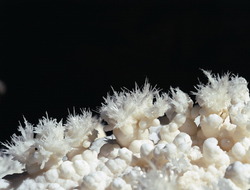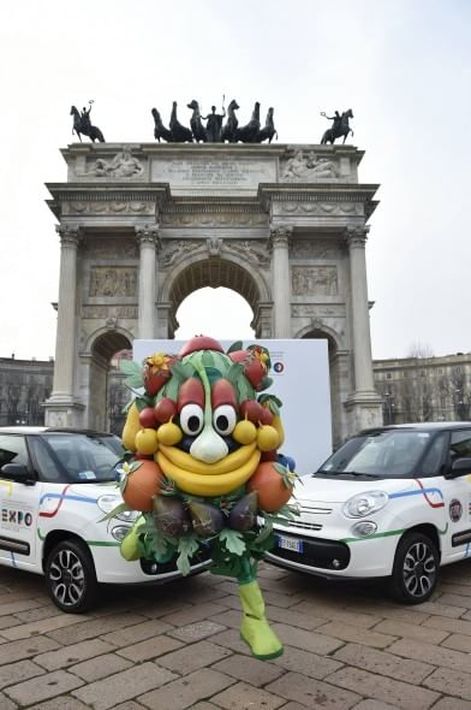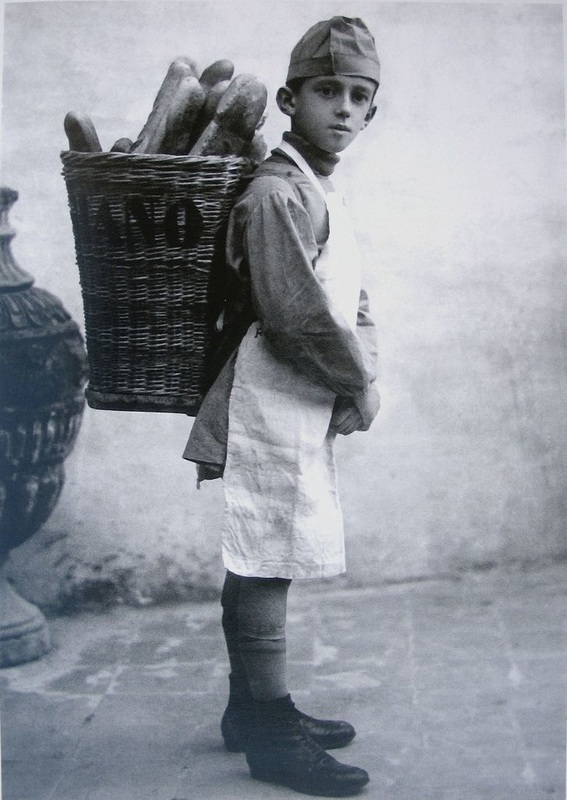|
Against the backdrop of sea and the hills of the Cilento peninsula, this music video features the song "Abballati" - a tarantella rhythm with sounds of flamenco - playing accordion, guitars, drums and sax that accompany the dance of their ensual tarantella dancer. The Rotumbe are and ethno-folk world music group from Cilento with an extensive repertoire of traditional music and original songs which utilize the bells and the tarantella rhythm of tambourine and tammorra. The Group and 'engaged in the project, "Cilento Music Art" with the aim of enhancing the cultural heritage, the traditions, the territory and the music of the Cilento (Campania). In 2011 Rotumbe produced the new album "Abballa appriesso to nui" with the record label IWM (Italian World Music). Enjoy...  "Le fave della prima moglie" "Le fave della prima moglie" Puglia had a real effect on us. For me personally, it completed the picture of who my father was. He was born in Molfetta and had a simple, joyful way about him--the same qualities I found in most people I met in Puglia. When we stayed in Trullo Gallo Rosso near Alberobello, our host Hugo had some prints of paintings hanging on his wall that illustrates the vitality, sense of community, love of food and wine and wonderful colors of Puglia... the artist was Vincenzo Milazzo. Milazzo captures the everyday life of Puglia in the same way that Grandma Moses captured life in rural America. His characters are depicted doing everyday things--baking bread, having a meal or working in the field. His style is similar to Moses in that the rules of perspective and proportion are pretty much broken, but that's the charm of Primitive Art... it's childlike in its simplicity and colors. In Italian, this style is called L'Arte Naïf, or Naïve Art.  Vincenzo Milazzo and his reverse glass painting technique Vincenzo Milazzo and his reverse glass painting technique The really unique thing is how Milazzo creates his art... he painstakingly paints in reverse on glass. That is, he holds the glass facing him as he reaches around the back to apply his paints to the back side of the glass. The subjects in his paintings are always full of life--you almost feel that you know them... an uncle here, a cousin there, perhaps a neighbor. Symbolism is important in his works, too. Take his lanterns. There are almost always kerosene lanterns in his paintings. And then there's the animals... dogs, cats, birds... even a turtle. Of course, there are trulli--those pointy conical houses that Milazzo's part of Puglia is famous for. He represents their whitewashed fairy qualities perfectly. His paintings seem to show a past life, but from what I've seen of life in his Valle d'Itria, he is also capturing the current lifestyle as well. For me, his work speaks of gusto--in the true Italian meaning of the word--to taste life. That's what the Pugliese do every day with their food, their music, The Cheese, The Pasta, The Grape and their great Primativo wines, their love of The Olive and their 2000 year old olive trees, and their smiles. I've never found such warm and genuine smiles as I did in Puglia... something that is also found on the people's faces captured on glass by Milazzo. His paintings are full of life and love of The Life... La Vita Pugliese. Vincenzo Milazzo's Facebook Page... --Jerry Finzi If you enjoyed this post, please share it with your friends... Ciao! All images used in this review are copyrighted by Vincent Milazzo.
My trip to Italy taught me one thing.... Italy is a country full of caves, grottoes and caverns of all types. Its geology is volcanic and there are many areas that have a geological structure known as Karst which provides the perfect conditions for caves to form. There are people still living in caves, such as the city of Matera, and people have lived in caves in Italy for tens of thousands of years. There are some caves too fragile or dangerous for the average tourist to enter, other caves that have offered important scientific discoveries, but there are many other "show caves" that welcome tourists all over Italy. I thought I would profile some of them here... Grotte di Frasassi, Marche Within the Frasassi Gorge in Genga, Italy, in the province of Ancona, Marche are a series of nearly 12 miles of caves. The largest cave, Grotte di Frasassi was discovered in 1971, with over a half mile of its caverns and tunnels is open to the public for tours that last seventy minutes. The most interesting stalactite and stalagmite formations have names just as compelling... Niagara Falls, Roman Giant’s Head, Candlesticks and the Organ Pipes. The vast Cave of the Great Wind, at 747 feet from floor to ceiling is one of the biggest caves in Europe. It's large enough to put a large cathedral inside... including its spires. You can visit casually or make reservations for more extensive "adventure" spelunking tours during which you enter deeper into the cave system wearing safety gear. The caves are located in the Frasassi Gorge, one of the most beautiful in Italy. In the area are castles and fortresses, so a minimum two day visit to the area is well worth the time. Tucked under the walls of the gorge is the interesting Sanctuary of Santa Maria infra Saxa--reminiscent of how the Pueblo built their dwellings under cliff overhangs. Grotta del Vento, Tuscany At the bottom of the Trimpello Channel, not far from the village of Fornovolasco is the entrance to Grotta del Vento... Cave of the Wind. In this part of Tuscany, the geological features are stunning... the Mount Pania Secca dominates this karst region deep abysses, bizarre monoliths and dark crevices can be seen. From the 17th century to the end of the 19th century, all that was known about the cave was the very cold air escaping it's mouth, which the locals directed into a cold storage structure they used to keep their food fresh. The cave was actually discovered in 1898 by several teens who--after a 4 year old girl entered the narrow windy opening, and returned--explored for themselves by widening the the narrow opening. It's said that they got scared themselves and ran out only 20 minutes later fearing monsters or bears or devils. In the summer visitors are typically shocked by the intensity of the wind coming from deep inside the mountain as they enter. As soon as the guides closes the door behind them the wind seems to stop. The secret to the wind is that there are really two cave openings: the lower one is the current entrance for tourists and is at 642 metres above sea level, the higher one is located at a height of 1400 metres, on the opposite side of the mountain. Hot air is drawn in through one entrance and runs through the cave toward the other opening... the air cools down and maintains a continuous circulation. Nature's air conditioning system! Besides a great sampling of stalactites and stalagmites there is even a waterfall and vertical shafts. They offer 1, 2 and 3 hour explorations with up to 180 feet in depth and over 1000 steps to climb. Grotte di Castelcivita, Campania The Castelcivita Caves are an amazing karst cave system in the municipality of Castelcivita, in the province of Salerno, Campania. The caves are in the National Park of Cilento and Vallo di Diano with 1,200 meters of passages open to tourists out of 5,000 meters total length. Castelcivita contains one of the most extensive and showy cave complexes in southern Italy. The local name for the site is the Spartacus Caves, named after a legend that the famed Roman Gladiator slave used the caves as a shelter. You can chose between a tourist tour (about one hour) or a longer caving experience lasting several hours. Visitors wear caving helmets with attached spotlights, which only enhance the spelunking adventure. Your visit can be better if you bring along your own high powered flashlight, as parts of the cave are very dark, illuminated only by the guide's light. Castelcivita makes a great side trip if you are visiting the Amalfi Coast, the archaeological site of Paestum or the beautiful port town of Agripoli... about 20 miles west from the seaside site. It's a very reachable destination in the mountains of Campania. Grotte di Pertosa-Auletta, Campania The Caves of Pertosa-Auletta, on the other side of the Alburno Mountains from Castelcivita Caves, is only a 40 minute drive from Salerno and once again, a perfect side trip from Amalfi or Paestum. This is the only cave system in which you can traverse an underground river by boat. The Negro river is fed by a spring from deep under the mountains, and offers a magical exploration of the caves by boat, the silence broken only by waterfalls deep inside the cavern. The cave tour is about a mile and a half long under the Monte Alburni, along which you will see stalactites and stalagmites, ribbon and "cave bacon" formations in varied colorations. This might be your only chance to boat across an underground lake! One drawback is the management doesn't allow photos to be taken, but offers a for-pay photo op area only. Personally, I think this is a sham--forcing people to pay for cheesy photos taken by their staff in one particular location. This is also an effort to coerce patrons into buying their postcards of the caves. It's a unique experience to see an underground river and lake (I saw one like this years ago in the States) but photos should be allowed! My advice... silence the beeps or clicks on your smartphones or cameras and shoot some discreet pics when the guides aren't looking. Castellana di Grotte, Puglia (Read my post of our visit to this cave here...) Located at the entrance of the Itria Valley in Puglia, a few kilometers from Alberobello (famed for it's pointed trulli houses), the beach town of Polignano a Mare and not far from Bari, the Grotte di Castellana began to form about 90 million years ago. The beauty of the Caves of Castellana have attracted over 15 million visitors. As you drive up to the site the touristy feel smacks you in the face, but rest assured, a visit underground is well worth it. The caves go on for a distance of 3 km, and a unique guided tour of the caves--one hall itself being over 60 meters tall--provides an amazing scenario made of stalactites, stalagmites, concretions, incredible shapes, fossils, canyons and caves with fantastic names... all to the delight of child and adult alike. Grotta Gigante, Friuli Venezia Guilia If you are traveling to Venice and then to Trieste, you might consider a side trip to Grotta Gigante near Italy's eastern border with Slovenia (just outside of Trieste). It is one the most interesting caves in the Italian region of Friuli Venezia Giulia, where tourism, environment and science work well together. The main underground chamber of the Grotta Gigante is... well... gigantic! Until recently, it held Guinness Book of Records as the world's largest show cave. Its central cavern 351 ft high, 213 ft wide and 430 ft long. The many, many, many (no exaggeration) steps take you down to the main chamber, with a guided tour lasting around 1 hour. There is an excellent museum where you can see prehistoric relics and bones of ancient creatures and a small but excellent cafe. Occasionally there are wine tastings and happy hour in the cave with aperitifs and other events. Grotta dell'Addaura, Palermo, Sicily When I visited the cave city of Matera in Basilicata I learned how people have lived in caves in the Boot for tens of thousands of years... Grotta dell'Addaura proves this. It is an important site containing prehistoric art located on the northeast side of Mount Pellegrino on the outskirts of Palermo, in Sicily. The site is a network of three natural grottoes: Addaura Cave I, Addaura Cave II, and Grotta Niscemi. The site's importance is based upon its spectacular rock engravings the earliest of which date around 11,000 BC. The rock carvings depict an apparent ritualistic sacrifice or punishment, featuring more than a dozen human figures in acrobatic or dance. The wonderful thing about these carvings is how the seem as elegant and as sophisticated as the work of Pablo Picasso in both line and movement. The discovery of the prehistoric artwork is itself an interesting tale... It was after the 1943 Allied invasion of Sicily that the Allies decided to use the grottoes for storing munitions and explosives. An accidental explosion of the arsenal blew apart the main grotto walls while bringing to light the ancient graffiti. Sadly, since 1997, the Addaura caves are no longer open to the public. Visitors to Palermo can still see artifacts from the cave at the Regional Archaeological Museum. Stone tools and other artifacts recovered from the cave, including some items of its art, as well as shards of ancient pottery are on display.  Arogonite crystals Arogonite crystals Toirano Caves, Liguria In 1950, some spelunking enthusiasts from Toirano discovered a series of internal amphitheaters following a 450-meter path, and notable for the richness and variety of their natural concretions, unusual stalactites and crystal formations. For millenniums, the cave bear (Ursus spelaeus) found refuge in the Toirano Cave, using it to hibernate. The bears' presence is evident by a large number of bone remains, ground paw prints, and claw marks on the walls.  Hanging... er... penises? Hanging... er... penises? There is also evidence prehistoric human presence, dated to 12,000-12,500 years ago. There are foot, hand and knee prints and, in the “mysteries amphitheater”, numerous small balls of clay stuck to the wall on which they were thrown, likely as a ritual. These are clues of Upper Paleolithic human presence. These people were local hunter-gatherers using this cave for ritual purposes rather than shelter. There have also been tools from Neanderthals dating over 80,000 years old. Guided tours last 70 minutes and cover a route almost 1-1/2 kilometers long. Not suited for handicapped individuals.  Waterfall inside Pastena Waterfall inside Pastena Grotta di Pastena, Lazio Grotta di Pastena in Lazio is an impressive river cave with huge passages and makes a great side trip from Rome. The tour shows two different parts of the cave, a water-filled section 200 meters long and a dry area, 900 meters long. It's best to visit the cave not in the dry summer, but in rainy times of the year when you will see the cave's best part... a river flows into this cave. The first huge passage takes you through a narrow passage to the active river cave. During winter rains this tour is dramatic. In the drier part of the cave, the sights are overwhelming, with numerous huge and glittering stalagmites and stalactites, organs and curtains of extraordinary size and beauty. There you have it... some options for visiting the caves of Italy. If you go, remember that there are usually very cool and humid conditions in caves. Wear good walking shoes... I'd recommend non-slip boating shoes over sneakers. Bring a hiking stick along to help deal with the uneven paths underfoot. As for the guides, there are good ones and bad ones. Just try and enjoy the beauty and mystery of what you are seeing with your own eyes and it will be worth it. Happy spelunking!
--Jerry Finzi If you enjoyed this post, please share it with your friends... ciao!  Many travelers have heard of Lake Como in Piedmont region... and many go there, or to Lake Maggiore--in droves. But how about a smaller, more intimate, just as beautiful destination in Italy's lake region? Instead of visiting Lake Como, you can go to a lake that even many Italians haven't heard of: Lake Orta. Lake Orta, is one of the smaller (7 miles long) and less known of Italy's Alpine lakes. Orta seems nowadays to have become secret and secluded, but at the same time holds enough amenities and entertainment for any visitor. Orta is a mystical, quieter setting... you can imagine fairies and princesses. It's a watery world of church bells, pine trees, mountain slopes, cliffs and snow capped peaks. Then there is the island of San Giulio--floating in the lake like a mystical kingdom with legends of dragons in its wake. There are water ferries that take you to the island where you can visit its Basilica, the Benedictine Monastery or simply wander it's quaint, picturesque streets. The adjacent town of Orta San Giulio--sitting on a peninsula with water on three sides--would be a perfect hub for visiting the lake. Stone archways, waterfront strolls, lanterns lighting the evenings... make it a fine romantic getaway. There is even a great market every Wednesday in the Piazza.  Events at Lake Orta include the annual Festival of Ancient Music, an international poetry festival each autumn, and the town of Omegna puts on a magnificent fireworks display every August. For the kids there are water parks and bob-sled runs, and of course there is the lake... swimming, skiing, fishing or simply sailing or pleasure cruising.  Lake Maggiore is nearby and can be included as a day trip from Orta. There is a cable car in the nearby town of Stresa on Lake Maggiore that runs to the top of Mottarone, a mountain with amazing views of the Alpine lake district. And in the lake nearby Stresa is Isola Bella, an aptly named island with one of the most stunning palazzo and gardens in all of Italy. In the summer the lake is alive with watersports, but you will also find a workaday life here. Much more real than highly trafficked tourist centers. Plan a visit, enjoy the lake and the views and send us a post card! --Jerry Finzi
If you enjoyed this post, please LIKE and share it on your favorite social media site... and to help us, try Googling "Instead of Visiting There, Go Here: Lake Orta" to help our ranking. Grazie! From L'Italo-Americano...
John Keahey is a journalist turned travel writer who lives in Salt Lake City, Utah. Some years ago on a visit to Italy he became enamored with Italian culture: its history and art. His falling for Italy in such a big way is understandable. He joins the legions of writers since the seventeenth century who have written about their Italian journeys. Besides the book under review, he has also written Seeking Sicily, Venice Against the Sea, and A Sweet and Glorious Land: Revisiting the Ionia Sea, which I reviewed in this column when it appeared in 2000. In the latter book Keahey follows in the footsteps of George Gissing’s 1897 classic, By the Ionian Sea: Notes of a Ramble in Southern Italy. Keahey’s Hidden Tuscany is not the conventional travel book listing those obligatory monuments and villages to visit. Nor is he interested in pointing his readers to new and undiscovered restaurants, thus rendering them both popular and avoidable. There are enough Rick Steves in the world of travel writing, and Keahey does not intend to compete with the travel industry. Rather, in Hidden Tuscany he writes an introspective and interesting account of his travels through Tuscany’s smaller, lesser known villages. (Click to read more...) Buy Hidden Tuscany on Amazon "American women do not seem to care much about their bella figura--their personal appearance. Our women will wear attractive clothing even if only going to the supermarket or even when stepping out of their home for a few minutes. Italian women care about their accessories. American women will wear poor fitting exercise clothing or pajamas and flip-flops to go to the bank, a grocery store or even to board a plane. Che disgustoso!"
"Americans love many ice cubes in their drinks. There is often more ice than drink in their glass. We Italians think that having ice in our drink is bad for digestion... congestione can kill a person. Besides, ice is for keeping fish fresh. And we do not have ice machines in our hotels. Everyone knows they breed molds, fungi, and bacteria. And besides, why should a hotel owner have to pay for the extra electricity to run the ice maker?"
|
Categories
All
Archive
June 2024
|



































 RSS Feed
RSS Feed
